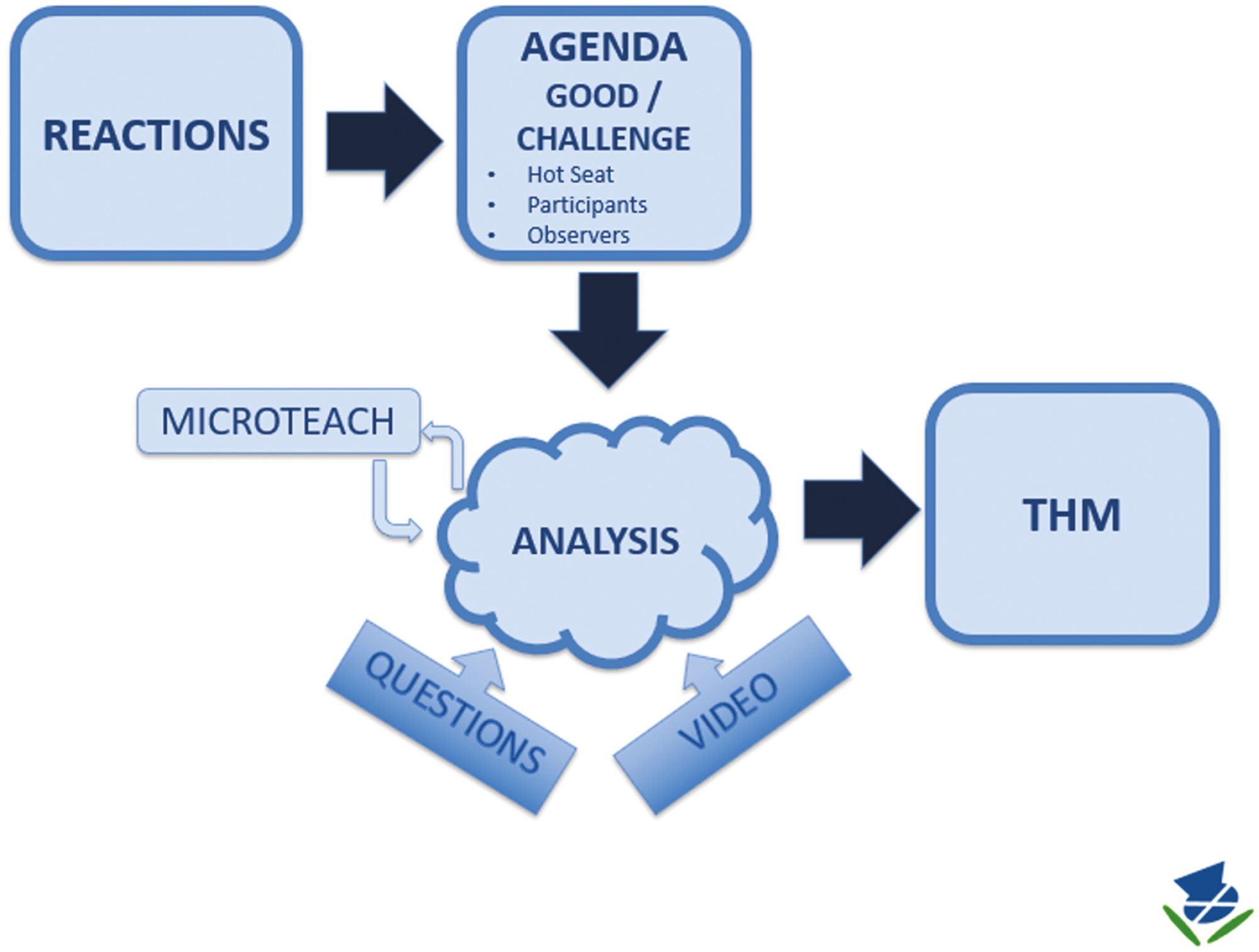The importance of using a structured debriefing model in simulation is well established and forms a pivotal phase in experiential learning [–]. There are several notable structured debriefing models designed to promote individual and team reflection [,,]. In 1998, the Scottish centre debriefing model (SCDM) was developed by the Scottish Centre for Simulation and Clinical Human Factors (SCSCHF). It is a learner-centred, multi-phased, facilitated reflection tool, widely used across Scotland.
This Key Concept article explains the SCDM structure:
- Reactions: ‘How are you feeling?’ This phase allows space for participants’ emotional reactions to the simulation to be expressed. It allows the dust to settle from the emotional energy of the scenario before moving into more analytical phases. At this point, the debriefer is gathering information about the level of learner engagement and challenge experienced; mindful they may need to acknowledge, validate and/or defuse some of the stronger reactions if required. Once emotions have been expressed and validated, the learning conversation transitions into the Agenda setting phase.
- Agenda: This phase seeks to create a learner-led list of items of interest based on their perception of what they experienced and observed and can be completed in a matter of minutes. This is the learners’ space and while the facilitator may guide and clarify, they will not add their agenda or observations in this phase.
There are several approaches that might be deployed to generate the learners’ agenda, including plus/delta [], guided description or open questioning. At this point there is agreement within the group to limit the discussion, to focus together on populating a list to be discussed later in the debrief. Another key function of this phase is the opportunity to allow everyone into the conversation, whether they were in the scenario or observing. In a constructively aligned scenario, the learners will express interest in discussing the elements related to the intended learning objectives (ILOs) and so these elements will appear on the learner-led agenda. Once elements of the ILOs have been raised as agenda items, and all participants have had a chance to contribute, the Agenda phase is complete and the conversation transitions into the Analysis phase.
- Analysis: In this phase, the debriefer retains a more active facilitative role, actively guiding discussion around each ILO in turn, using the generated agenda items as a springboard. To guide this phase, the SCDM is explicit about the following three analytic devices:
- Frames-based questions : Each of the selected themes are explored using observations and curious questioning as part of a frames-based approach [].
- Video: Where appropriate, signposted video from the scenario is used to facilitate conversation, aid recall and promote analysis.
- Microteach: Where it is clear that the requisite knowledge or lived experience is not in the debrief space, the facilitator can offer a short didactic microteach to fill the gap. This device is only deployed as required and for an experienced debriefer using constructively aligned content, will often not be required.
- Take-Home Messages: The concluding phase of the SCDM is a collection of the learners’ take-home messages. These are designed to be as practical and actionable as possible from the learners and in their own words. This is also a localized evaluation of whether the faculty have effectively designed and delivered a constructively aligned simulation learning event (and may help identify previously unidentified learning opportunities ) for participants [].
Acknowledgements
We would like to acknowledge Julie Mardon, Michael Moneypenny and Joel Burton (the Scottish Centre for Simulation and Clinical Human Factors) with whom this debrief model could not exist.
Authors’ contributions
Lead author – responsible for writing the article. All authors – responsible for collaborating in and editing the work as well as developing and promoting the Scottish Centre Debrief Model itself.


